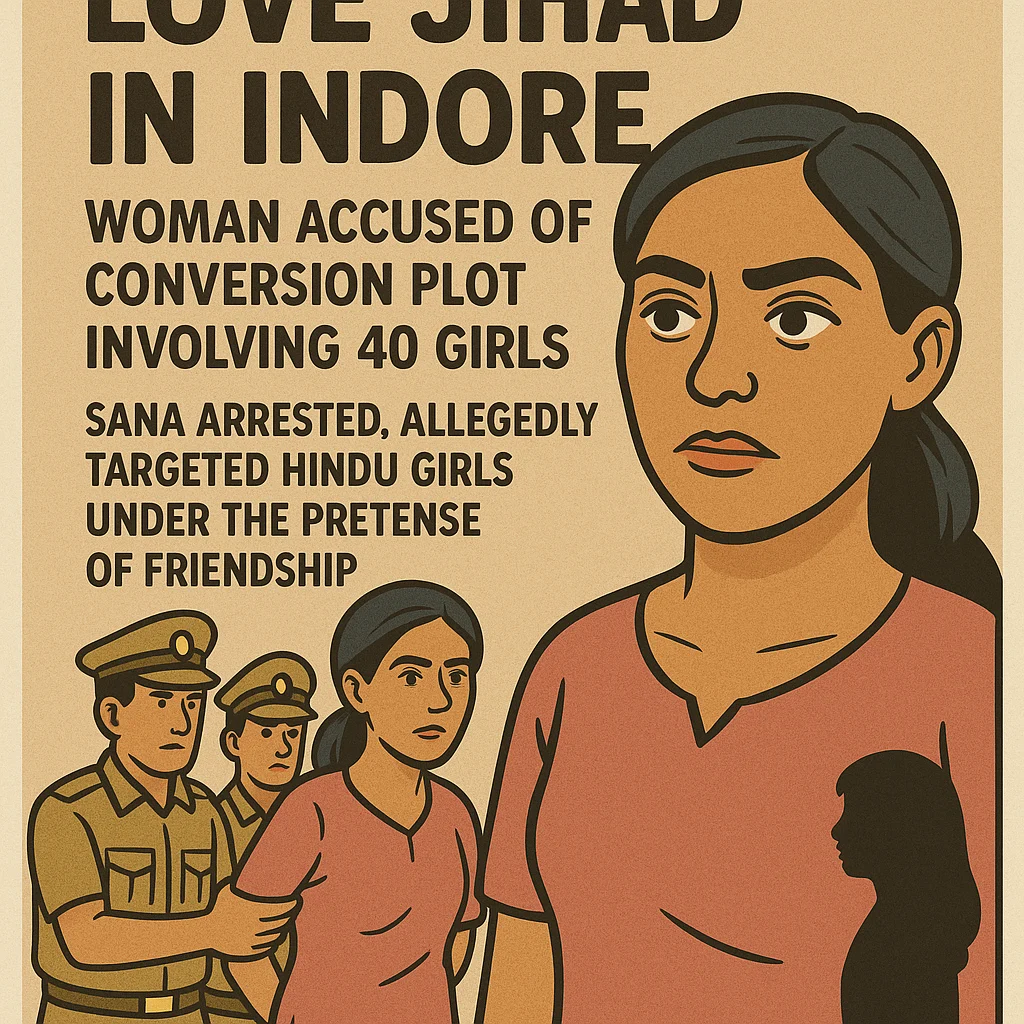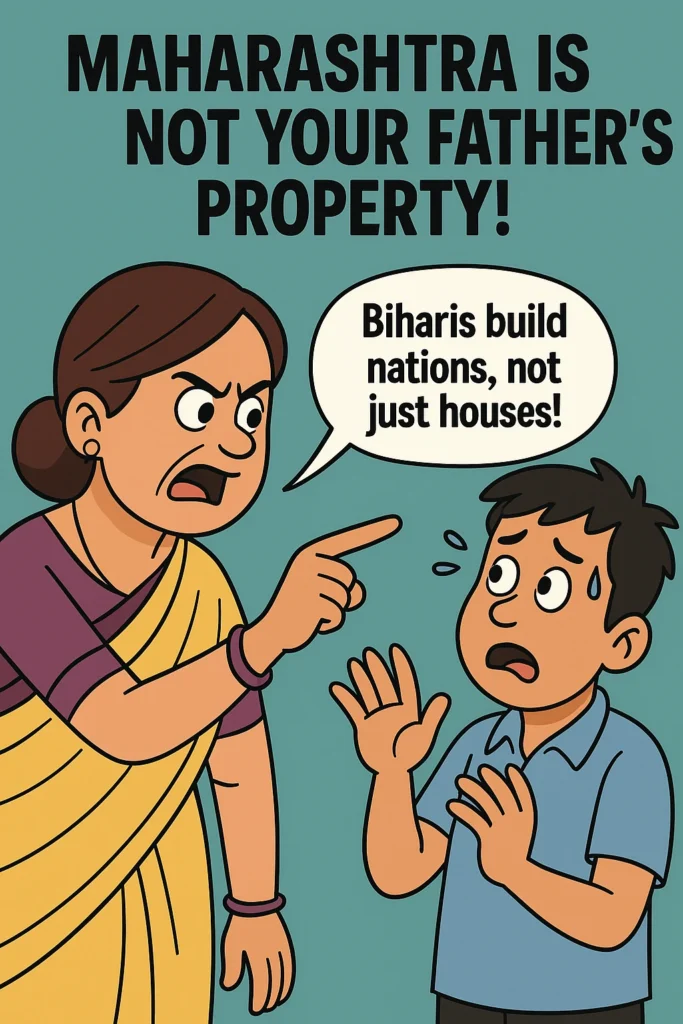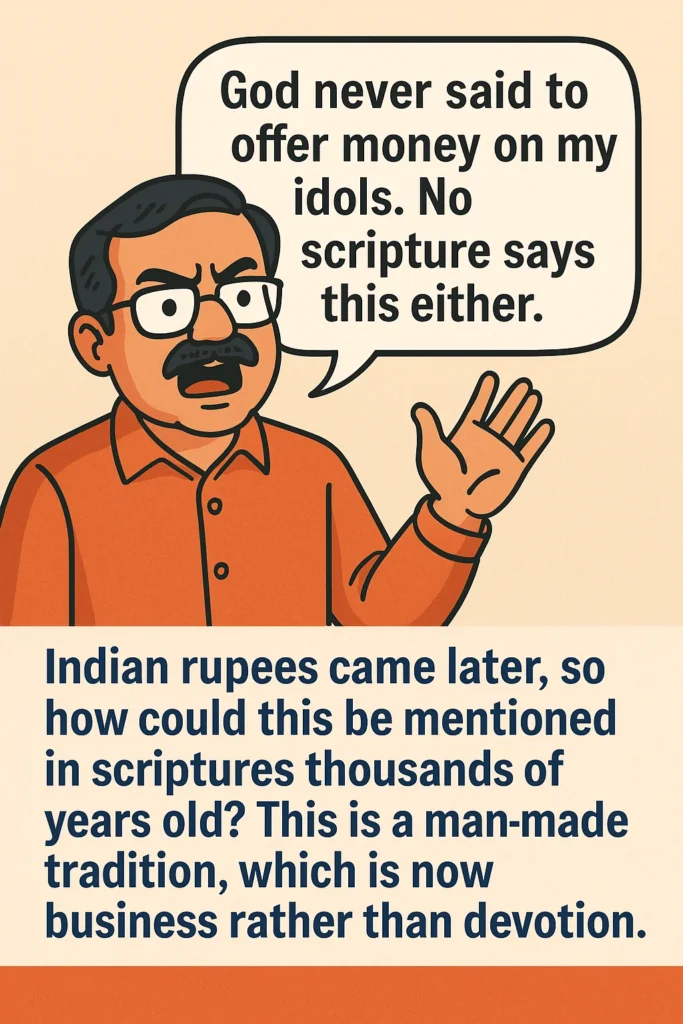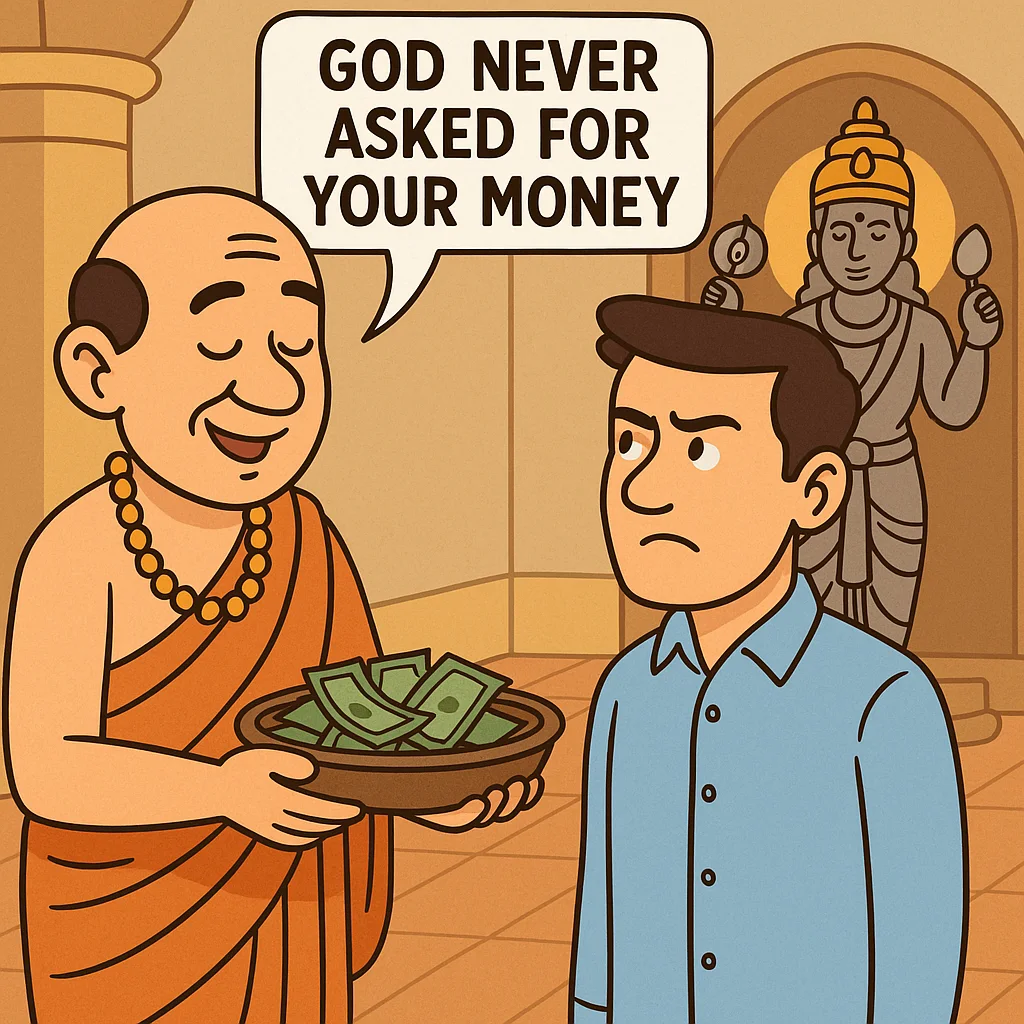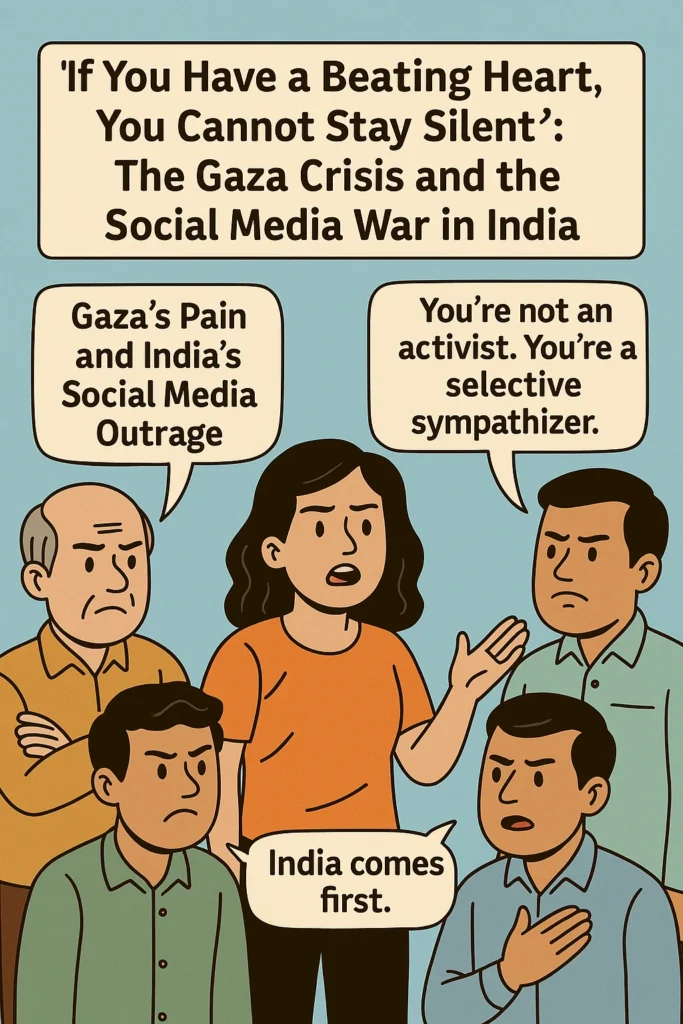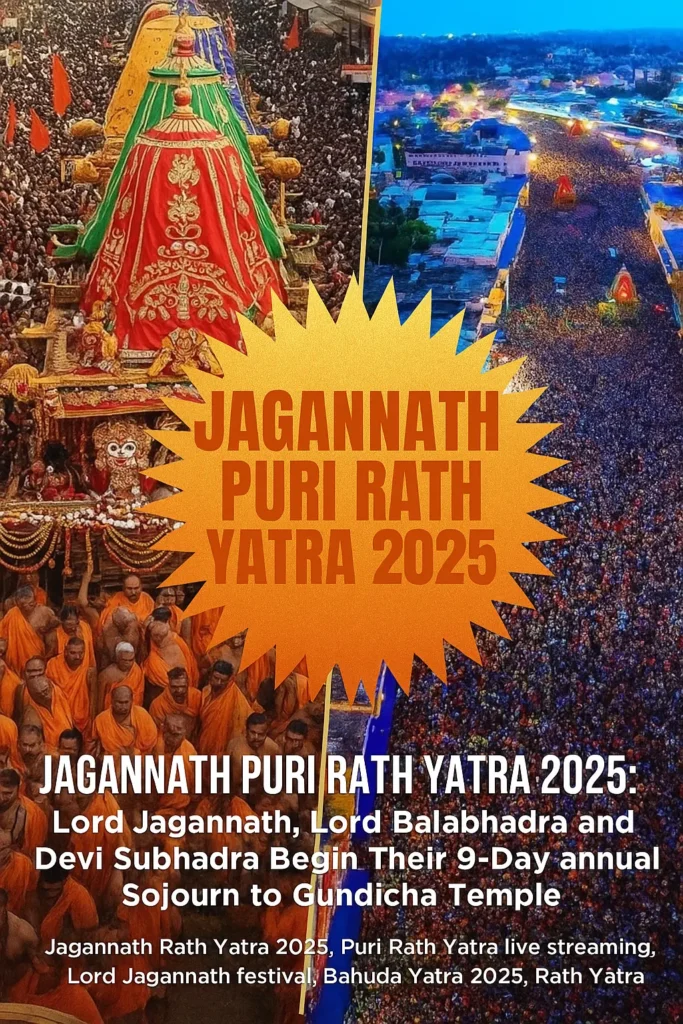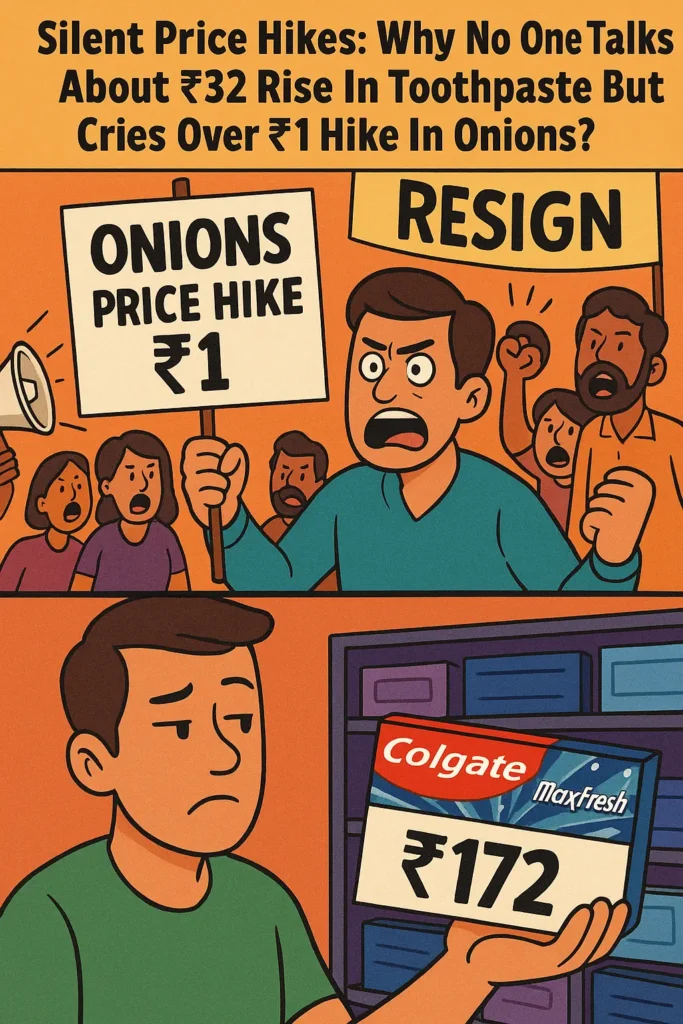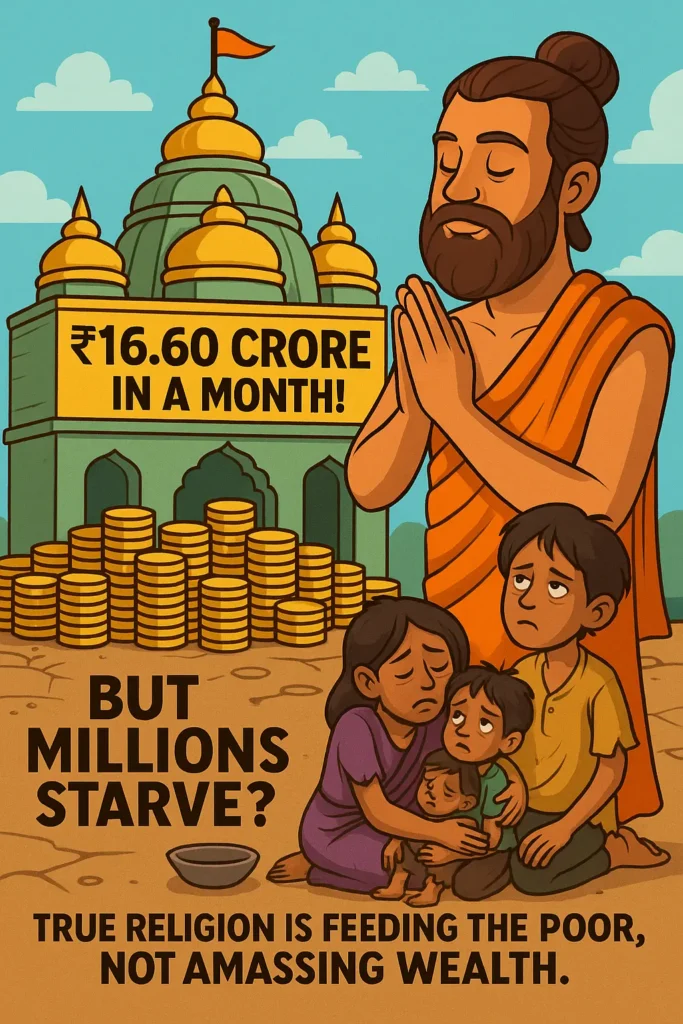When international brands increase prices silently, there’s no outrage—but if onions rise by ₹1, the whole nation erupts. Why the double standards? In India, even a ₹1 hike in milk or onion prices sparks widespread outrage. News channels organize fiery debates, opposition parties hit the streets in protest, and hashtags trend on social media demanding answers from the government. But surprisingly, when multinational companies like Colgate hike prices significantly—say, from ₹140 to ₹172 for a Max Fresh toothpaste in just four months—there’s no noise. That’s a whopping 23% price jump. No debates. No media coverage. No accountability. This raises a disturbing question: Are we being silently looted by foreign corporations while we continue to vilify Indian brands? If Milk or Onion gets costly by even ₹1 , people start blaming govt , news debates start , opposition comes out protesting and demanding resignation from govt. But, Price of Colgate Max Fresh 4 months has increased from ₹140 to ₹172 (hike by 23% ) , but no debate no outrage… pic.twitter.com/pDoNCDsd0N — Amitabh Chaudhary (@MithilaWaala) June 28, 2025 Colgate’s Stealthy Price Hike For decades, Indian households have trusted Colgate for oral care. But the recent ₹32 jump in just four months—without any change in weight, packaging, or ingredients—shows how these brands operate silently, knowing consumers won’t question them. The blind trust we place in foreign products has created monopolies where brands can charge anything, and we’ll continue buying without a second thought. And the moment an Indian brand like Patanjali enters the market to provide alternatives, it’s mocked, boycotted, or met with political conspiracy theories. Mocking Indian Brands: A Dangerous Habit It’s unfortunate how many Indians take pride in foreign products while mocking their own. While Baba Ramdev’s Patanjali and others try to offer herbal, affordable options, they often become the target of ridicule, memes, and propaganda. Even though these products are often priced lower and made in India, they struggle to gain the same trust that we readily offer international brands. Many Indian consumers say, “We don’t trust Patanjali”, but fail to question what’s in their imported toothpaste. Did you know that some global toothpaste brands contain animal-derived ingredients like glycerin and enzymes—making them unsuitable for vegetarians? Yet, they’re used in vegetarian households without a second thought. The Need for Consumer Awareness Why do we expect the government to answer for everything, but never question corporations? The double standard is not just absurd; it’s dangerous. Consumer awareness should go beyond emotional triggers and extend to economic responsibility. Supporting Indian brands not only boosts our economy but also challenges the monopoly of foreign corporations. What Can You Do? 5 Most Asked FAQs 1. Why has Colgate increased its prices silently?Most multinational companies review pricing regularly based on profit margins and inflation, but unlike essential items, their hikes often go unnoticed due to consumer habits. 2. Is Patanjali toothpaste as effective as Colgate?Yes, many users report that herbal alternatives like Patanjali Dant Kanti or Meswak are just as effective, if not better, especially for gum care and bad breath. 3. Why don’t Indian brands get the same respect as foreign brands?Years of marketing dominance and colonial hangover have created a mindset where foreign equals better. This perception needs to change through awareness. 4. Are animal-based ingredients used in toothpaste?Yes, some brands use glycerin, enzymes, and other ingredients derived from animal fat, though not always disclosed clearly. 5. What’s the best alternative to foreign toothpaste brands?Consider Indian-made options like Patanjali, Dabur Red, Meswak, or Vicco Vajradanti, which are natural, cost-effective, and ethically produced.


